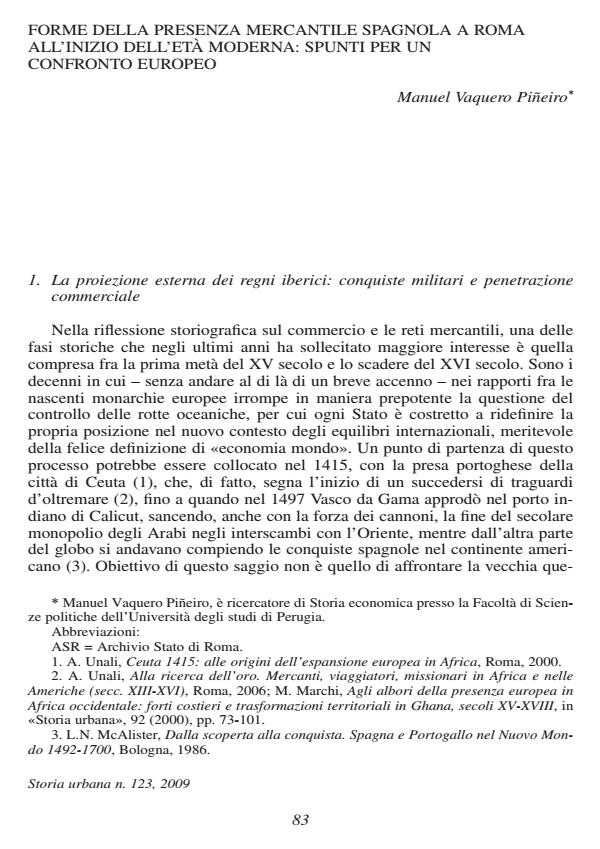Forme della presenza mercantile spagnola a Roma all'inizio dell'età moderna: spunti per un confronto europeo
Titolo Rivista STORIA URBANA
Autori/Curatori Pineiro Manuel Vaquero
Anno di pubblicazione 2009 Fascicolo 2009/123 Lingua Italiano
Numero pagine 18 P. 83-100 Dimensione file 596 KB
DOI 10.3280/SU2009-123004
Il DOI è il codice a barre della proprietà intellettuale: per saperne di più
clicca qui
Qui sotto puoi vedere in anteprima la prima pagina di questo articolo.
Se questo articolo ti interessa, lo puoi acquistare (e scaricare in formato pdf) seguendo le facili indicazioni per acquistare il download credit. Acquista Download Credits per scaricare questo Articolo in formato PDF

FrancoAngeli è membro della Publishers International Linking Association, Inc (PILA)associazione indipendente e non profit per facilitare (attraverso i servizi tecnologici implementati da CrossRef.org) l’accesso degli studiosi ai contenuti digitali nelle pubblicazioni professionali e scientifiche
Forme della presenza mercantile spagnola a Roma all’inizio dell’età moderna: spunti per un confronto europeo - The different forms of presence of Spanish merchants in Rome since the beginning of Early Modern Age: ideas for a debate at European level. Between the 15th and the 16th centuries, due also to the political coverage offered by the empire of Charles V, both Castilians and Catalans succeeded in establishing themselves as the most dynamic merchants in Europe. The control they had over strategic raw materials such as wool, iron and alum and their privileged position gave them easy access to monetary flows in the coastal cities from Flanders to the Mediterranean, where a number Spanish colonies were established. These cities were soon granted with major privileges by local authorities, which fostered the settling of merchants and bankers in certain areas therein. The result, as in the case of Bruges, was the creation of districts protected by exclusive jurisdictional rights or, as in the case of Rome, a random scattering of the new settlers, with no real reference points. In the mid 16th century, in Rome the distribution of places of work and residence followed no national or religious criteria. The complex structure of social relations was thus reflected also in Rome topography.;
Pineiro Manuel Vaquero, Forme della presenza mercantile spagnola a Roma all'inizio dell'età moderna: spunti per un confronto europeo in "STORIA URBANA " 123/2009, pp 83-100, DOI: 10.3280/SU2009-123004